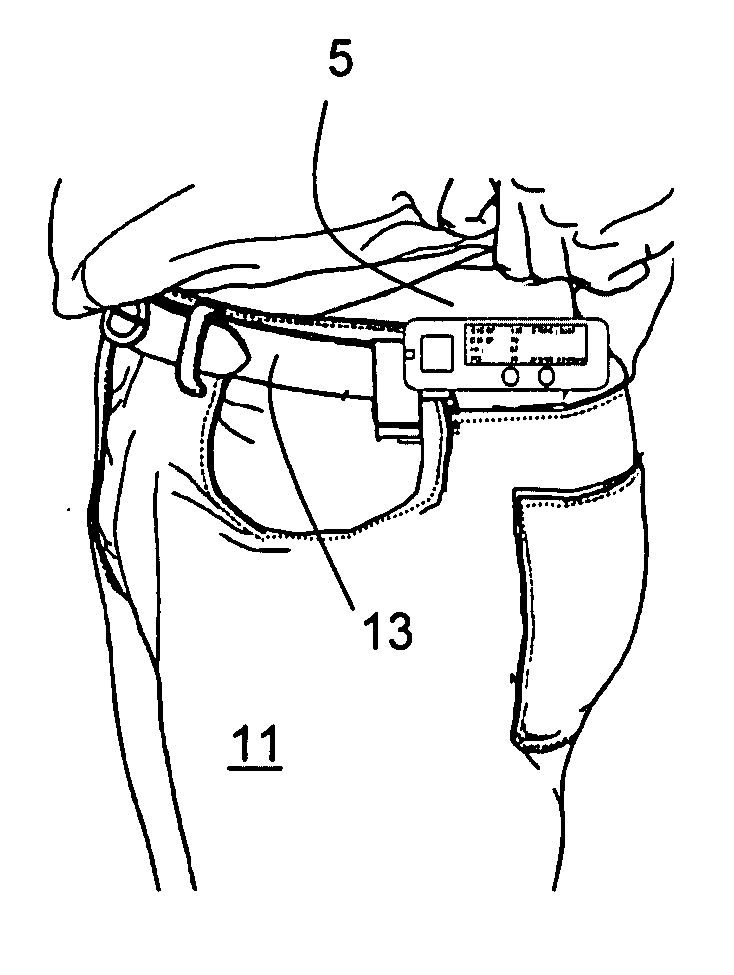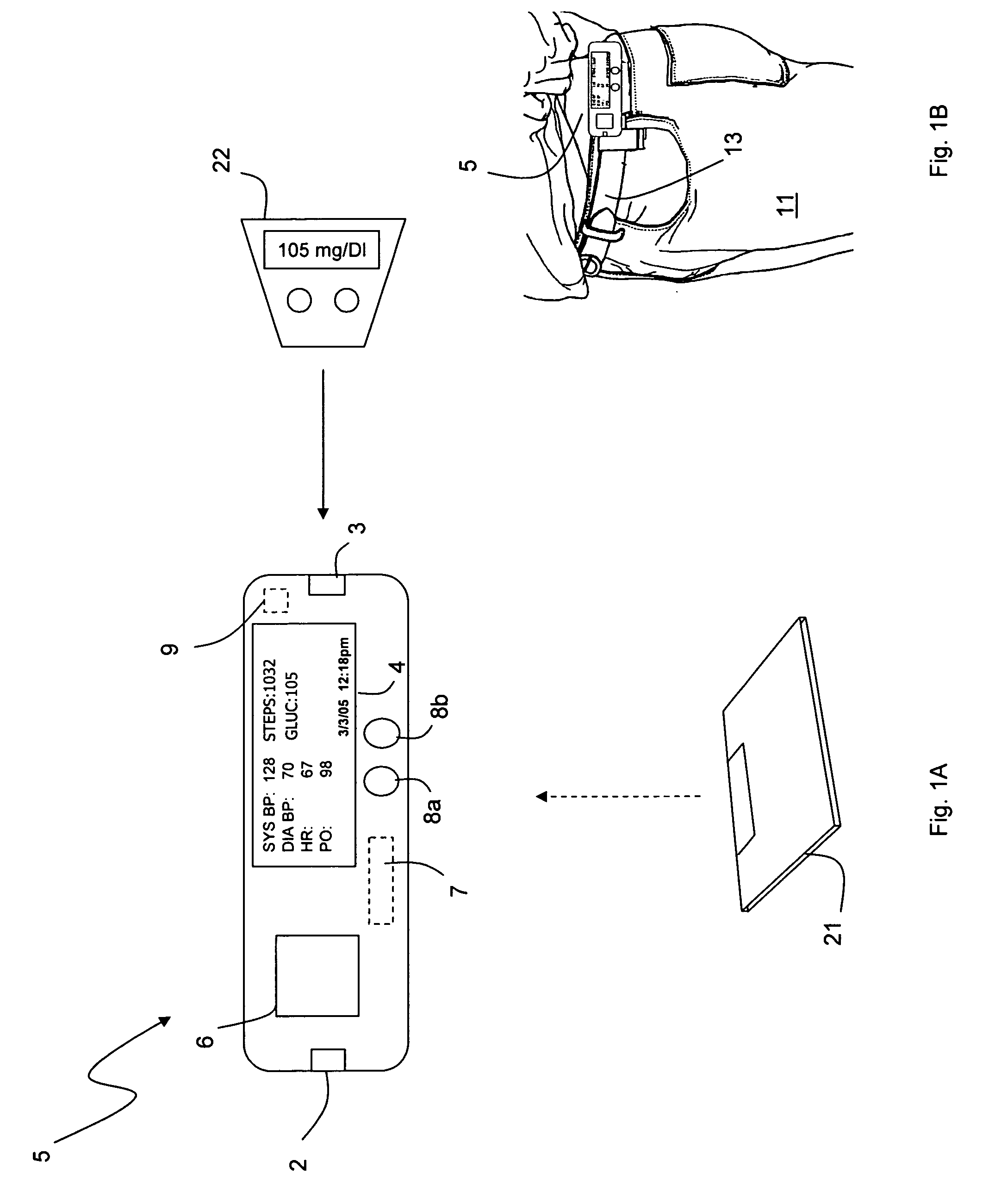Monitoring device for measuring calorie expenditure
a monitoring device and calorie expenditure technology, applied in the field of medical devices for monitoring information, to achieve the effect of reducing the risk of certain medical conditions and building patient complian
- Summary
- Abstract
- Description
- Claims
- Application Information
AI Technical Summary
Benefits of technology
Problems solved by technology
Method used
Image
Examples
Embodiment Construction
[0021]FIGS. 1A and 1B show a portable, small-scale monitoring device 5 that measures information such as blood pressure, pulse oximetry, heart rate, glucose levels, calories burned and steps traveled from a patient 1. The monitoring device 5, typically worn on the patient's belt 13, features: i) an integrated, optical ‘pad sensor’6 that cufflessly measures blood pressure, pulse oximetry, and heart rate from a patient's finger as described in more detail below; and ii) an integrated pedometer circuit 9 that measures steps and, using one or more algorithms, calories burned. To receive information from external devices, the monitoring device 5 also includes: i) a serial connector 3 that connects and downloads information from an external glucometer 22; and ii) a short-range wireless transceiver 7 that receives information such as body weight and percentage of body fat from an external scale 21. The patient views information from a liquid crystal display (LCD) display 4 mounted on the m...
PUM
 Login to View More
Login to View More Abstract
Description
Claims
Application Information
 Login to View More
Login to View More - R&D
- Intellectual Property
- Life Sciences
- Materials
- Tech Scout
- Unparalleled Data Quality
- Higher Quality Content
- 60% Fewer Hallucinations
Browse by: Latest US Patents, China's latest patents, Technical Efficacy Thesaurus, Application Domain, Technology Topic, Popular Technical Reports.
© 2025 PatSnap. All rights reserved.Legal|Privacy policy|Modern Slavery Act Transparency Statement|Sitemap|About US| Contact US: help@patsnap.com



